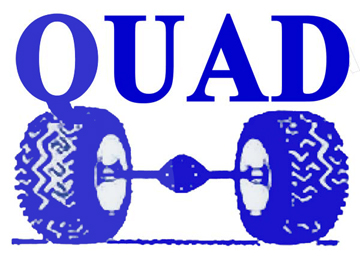|
Dana-Spicer
Model 60, 70 and 80 rear drive axles equip many
Dodge, Ford, GM, IHC, and Jeep ¾
to 1¼ ton trucks. Dana 60
and standard model 70 axles share the same differential and
outer pinion bearings. Dana 70HD and Model 80 axles have
larger differential bearing and spacers between the differential
bearing cups and differential housing. Dana 80 axles also have
much larger pinion bearings than the 60's and 70's.
The basic
design of these axles is well proven, but like any mechanical
device, proper maintenance and lubrication is essential to
obtain a satisfactory service life. There are also serious
durability problems with the differential bearings associated
with the combination of Diesel or big gas power and heavy
loads.
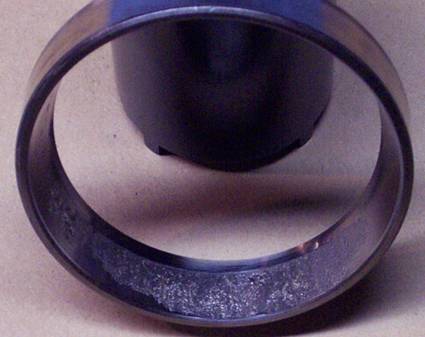
Badly pitted
Differential Bearing Cup from a Model 70 after 143,000 miles.
This bearing is from a Dodge W350 1 ton truck with a 360 gas engine.
|
The most
common parts failure problem with these axles coupled to high
horsepower engines is reduced differential bearing life.
Tremendous pressure is put on the differential bearings under
high load/high torque situations. After 125,000 miles or so,
the bearings and races will be worn and pitted. From this
point, friction between the bearing components increases until
the press fit inner bearing race will start to slip on the
differential bearing hub. This slipping action starts to wear
into the hub and tear the adjusting shims that fit between the
differential and bearing cone. Once the shims tear through,
they fall out, which effects differential bearing preload, plus
backlash between the ring and pinion. The drivers side bearing
is usually the one that fails first which can substantially
increase the backlash from the recommended .005-.008. If the
problem is on the passenger side, backlash is decreased to the
point the ring and pinion teeth are metal to metal. In either
case, its bad news which can quickly lead to gear,
differential, and/or rear antilock brake failure.
|
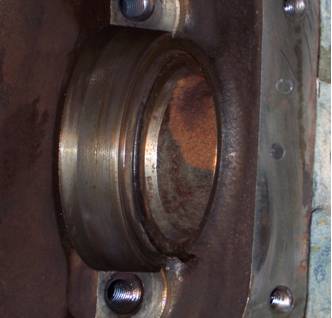
Model
60 and 70 Differential Bearing Cups often Wear into the Narrow
Differential Bore Face. This condition will alter backlash and
accelerate bearing wear. The worn faces can be trued with the
QT1000 Differential Bore Facing
Tool
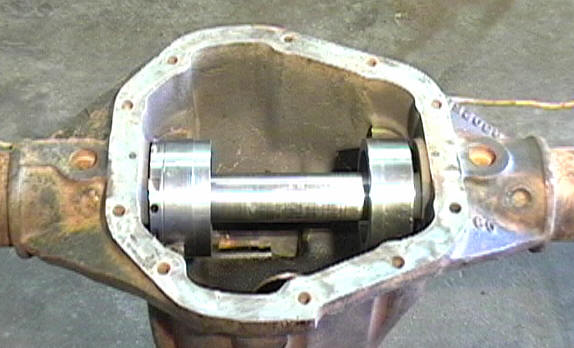
QT1000 Ready to Reface Bores |
Cocked
differential bearing cups are a common problem with Model 60 and
70 axles. The rear part of the differential bearing bore face
is a relatively narrow raised casting. Under repeated high
torque loads typical of hard working, big engine trucks, the
differential bearing cup will slowly wear into the narrow
casting which cocks the cup and causes uneven bearing wear.
Again, the problem most commonly occurs with the drivers side
bearing. If not caught early, the axle housing bearing bore
faces will require refacing with the QT1000 refacing tool. Ring
and pinion tooth breakage is common with advanced cases. This
problem does not normally occur with Model 80 axles, which have
steel spacers between the cup and bore face.
As a rule, the pinion bearings will outlast the differential
bearings, but they should be replaced any time differential
bearings are replaced. The pinion preload on most of these axles is set
with selective shims between the outer pinion gear bearing and
pinion shoulder. As the bearings wear, pinion preload is
gradually reduced until there is no preload. Continued wear can
cause gear damage or pinion seal leaks.
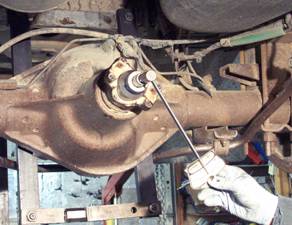
Checking Pinion
Preload by rotating pinion with an inch-pound torque wrench. |
Vehicle
manufacturer recommendations for lubricant service vary with
later model trucks, often using synthetic gear lubes. (I am a
firm believer in modern synthetics for all axle lubrication.) For
instance, for some years Dodge has no scheduled rear axle
oil change interval for trucks operated under normal service
(Maintenance Schedule A), and a 12,000-15,000 mile interval
depending upon year for severe duty service (Maintenance
Schedule B). To minimize bearing wear, we recommend
trucks operated under normal service have the rear axle
lubricant changed every 2 years, or 30,000 miles unless a more
frequent interval is specified in your owners manual. We also
recommend the rear differential and pinion bearings be replaced
on hard working Diesel and large gas engine trucks after 125,000
miles to prevent major component failures caused by excessive
bearing wear. At the same time, the differential thrust
washers, pinion mate gears, side gears, cross shaft, and limited
slip clutch packs should be checked for wear and worn parts
replaced. For parts, we advise using only genuine
Dana-Spicer components which
are reasonably priced and readily available as individual pieces
or kits
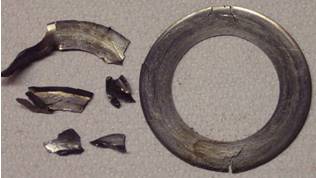
Side Gear Thrust
Washers After 147,500 Miles. Axle lubricant was never changed.
|
The 125,000
mile interval is also a convenient time to inspect the wheel
bearings for wear and check the axle vent for blockage which can
cause pressure to build up in the axle until relieved by seal
failure.
|
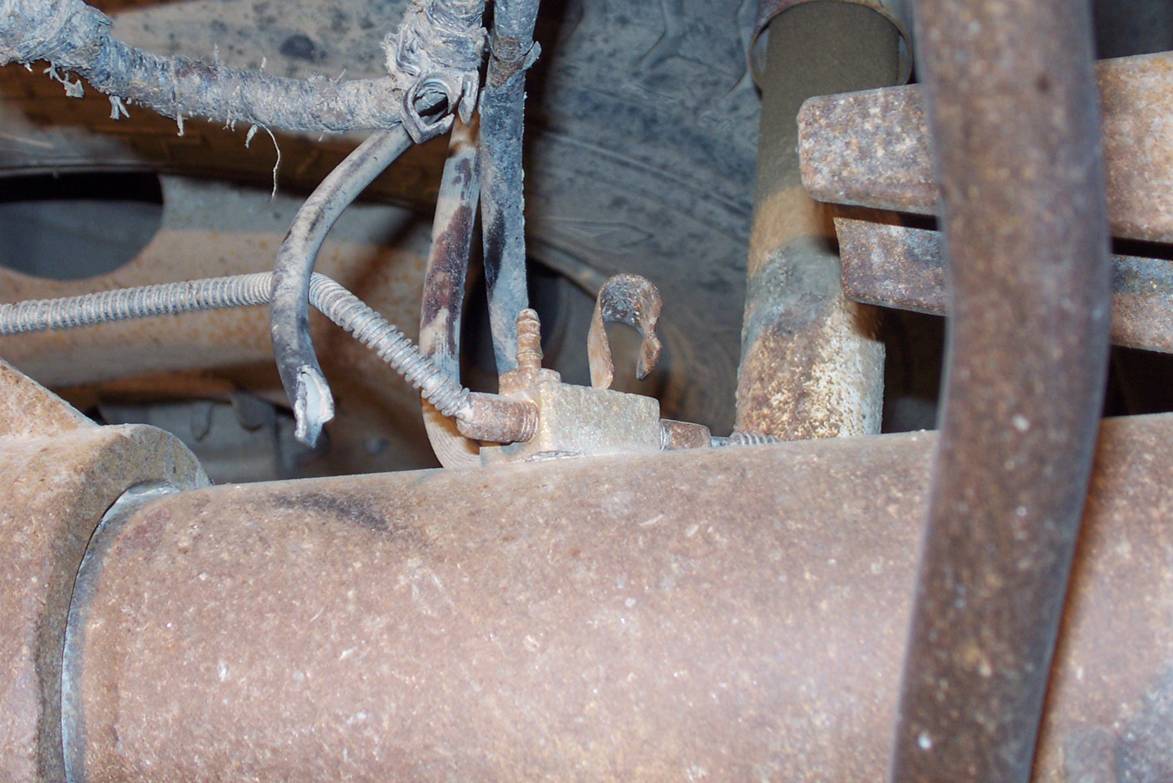
Broken vent hose
allowed dirt to clog axle vent. As axle warmed up during use,
expanding air in axle caused wheel seals to fail. Oil
contamination on the brakes shoes led to erratic brake
performance and permanent damage to the brake friction material. |
We see a lot of problems with the outer wheel bearing wearing
into the spindle nuts on Ford
and Dodge trucks with
elastic stop nuts and lock wedges. For these years, we replace
the original single nut and wedge with a spindle nut upgrade set
that consists of a thrust washer, lockwasher, two nuts, and an
axle shaft gasket. This upgrade is available in a kit with a
spindle nut socket.
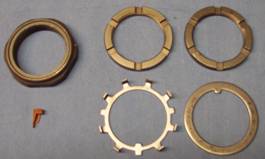
(left) Original
single spindle nut with wedge. (right) Double spindle nut
upgrade set from QK4000 Spindle Nut Kit.
|
|
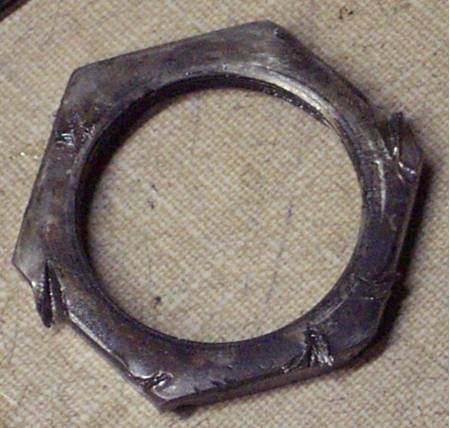
Improper wheel bearing adjust often leads to leaking seals or
failed bearings. A chisel is not the appropriate tool to
adjust your spindle nuts. Use a torque wrench and the correct
spindle nut for your application! |
|
